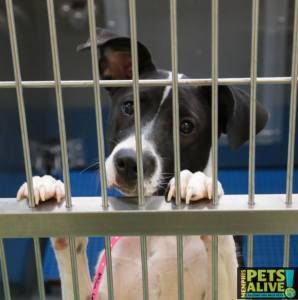Guest Blog Post by Mary Marr:

In the field of pet rescue, there are always concerns about getting involved with people you don’t know well (or at all). How can you find out if their intentions are good for any animal for which they are making a commitment? Many people are “new” to rescue, and as such, they often don’t know how to learn more about safe ways to help. Recently there’s been a lot of buzz about issues relating to helping rescues when you don’t know the people personally. Let’s talk about it.
Please consider this particular blog post as only the beginning of a conversation. Please consider that not everyone will agree with my suggestions for how or when to begin your research. But let’s try to decipher a little bit of what we mean as a rescue community when we say that someone should be checked out before YOU help them get a dog from the shelter, out of the field behind your office, or any other number of ways you can think of!
Let’s say you have identified a dog you would like to network, and you have been sharing her photos far and wide. Of course, that is exactly what we hope you will do! That is the entire purpose of MPA!’s Wag Along Tuesdays, and all of the combined efforts of the photographers and volunteers.
Suppose someone contacts you, they run a rescue in XYZ town and they have room for the pup, but can you help them with pulling the dog? And then also help with transport planning? What do you do?
At this point, you have decisions to make, MOST especially if you don’t know this person. Yes, saving the dog is always the desired result. What you don’t want is to find yourself part of the process that leads to the pet going to some unknown fate. BEFORE you get the dog, let’s talk about some small ways you can start learning more about where this dog might be going if you were to get involved further.
Anyone on the internet could say, “I am a rescue”, “I am a foster”, “I am a non-profit”, “I am applying for my 501(c)3”, etc. How do you know for sure?
A group, or a person, can apply to their state government to become a non-profit. That is NOT the same as 501(c)3, but it is a step in the right direction. These are two different levels of governmental recognition, and you should feel totally comfortable in asking to see their “letter”. A legitimate rescue will not be offended by you asking questions about their status in this process.
The sequence is to become a non-profit first at the state level, and then also become a 501(c)3 at the federal level. The time and expense required to do that does prove that they are at least legitimate in the government’s eyes. (But so are many puppy mills, so we’re not done yet.)
If they don’t like your questions about this process or the status, consider that a RED FLAG. 
Your second step in checking them out is the city where they are located and the type of dog. IF the group is breed specific, you might try to figure out if they cover a certain area of the country. Is the breed harder to find or smaller? Sometimes highly desirable, healthy, adoptable pets are harder to find in some areas. You could easily make a few phone calls, such as to the local humane society or animal control in that town and just ask about the numbers of dogs they see, the sizes, what people are looking for, and even ask if they know the rescue or the leaders of the rescue.
If you sense anything amiss from these conversations, consider that a RED FLAG. 
Taking this one step further, let’s talk about the pit breeds and some other larger dogs, especially mixed dogs. Often these are the dogs we feel most desperate about, because they are harder to place. You want to know, without a doubt, that a dog of this size or breed, is going into good hands. Research is crucial.
Follow the same steps as with a smaller dog, and ask the HS or ACO how many dogs of a similar type do they currently have? How many dogs go through their facility in a month? Answers to these questions will let you know whether the rescues in that area have been helping dogs in their own hometowns. These can give you the “big picture” you need to understand where their local dogs are going.
Another place to research is online. Start with Google. Type in the name of the person or group contacting you. Look for articles, news stories, anything from their town that mentions possible transgressions. You can also look at their webpage, Facebook page, Pet Finder page, and the assorted pages of their leadership. Do they have positive reviews and comments? Do they have NO remarks at all? That’s usually a sign they have not been around long.
The more information you are able to view, the more your decision will become clear. If this is a reputable rescue, there will be good information. If you can’t find good information, or if you find BAD information, use that to decide how you will proceed. Some among us will say there’s no need for transporting dogs or pulling dogs for rescues outside our area. You have to decide that on your own. I just want to help you to be smart as you can and think it all through.
More steps you should consider:
Ask them for a Vet reference to call. Call the vet and ask about their records, pet care, and bill. Unlike human patients, this information is not usually considered confidential, especially if you mention the reason you’re calling. Vet offices are used to these types of conversations, so call and ask.
Ask them for a Groomer reference if they take in long haired dogs. Call the groomer and ask to speak about the rescue’s record of care, bill paying, and treatment of skin issues such as fleas/mange, etc.
Ask them for a few of their current or past fosters to talk to, and then call those people. This is an excellent way to get an inside look into the rescue. A good rescue has fosters who praise them. A bad rescue, or an overwhelmed rescue, will struggle to find someone they want you to talk to.
Ask them for previous adopters as references. Call the references and ask them how they were treated, what the communication was like with the leadership, and how any problems were handled. Would they adopt from the group again?
If you feel nervous about any of these phone calls, write a little checklist to use while you are talking!
If you feel uncomfortable with any of the answers you get from this research, please take the time to reach out to another rescue. Keep the pet as your focus always and you will know what to do.
If you sense anything amiss from these conversations, consider that a RED FLAG. 
I have primarily addressed dogs in this post, as they are the ones most often up for transports, but a similar line of questioning should be considered for any pet that you might want to help this this manner: cat, horse, pig, birds. The shelters around the Mid-South often get farm animals and a similar process could be suggested for sending to a farm as well. Can you get someone to do a home check? On a farm, I would
As I stated before, not everyone with every rescue will agree with what I’ve suggested here. Let’s have a friendly dialog about this topic, so that everyone can learn more together. Thanks for reading, comment below!





Thanks for the information. I am new to the world of animal rescue so need to know as much as possible.
LikeLike
Rescues who are non-profit charities should be equally cautious in giving a copy of their 501(c)3 designation letter to unfamiliar people. This could be used by unscrupulous persons to “pretend” to represent the rescue allowing them to pull animals from shelters outside the area. 501(c)3 organizations can be verified by visiting IRS.gov.
LikeLike